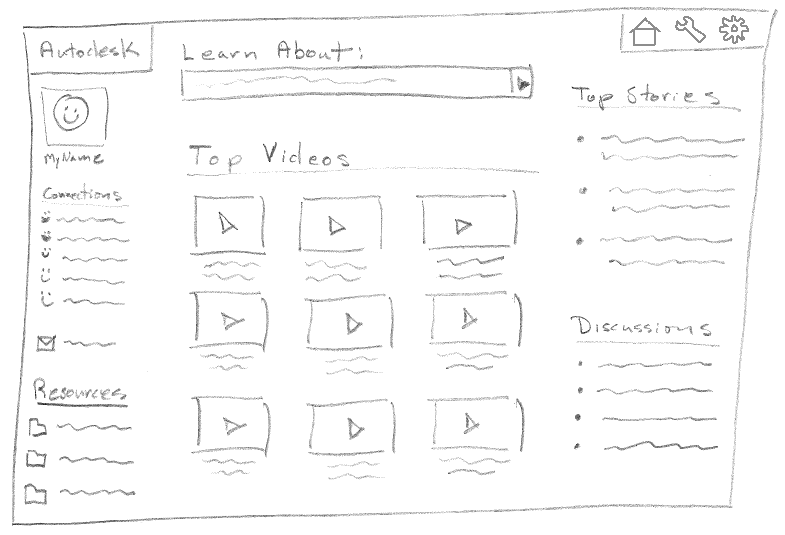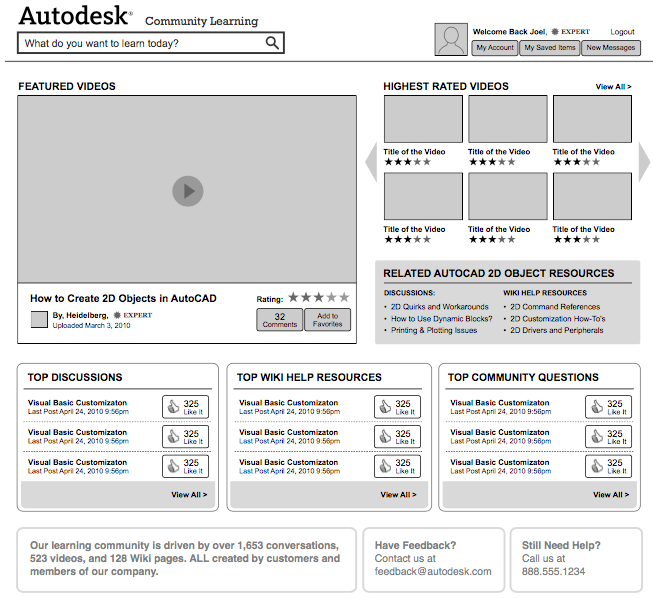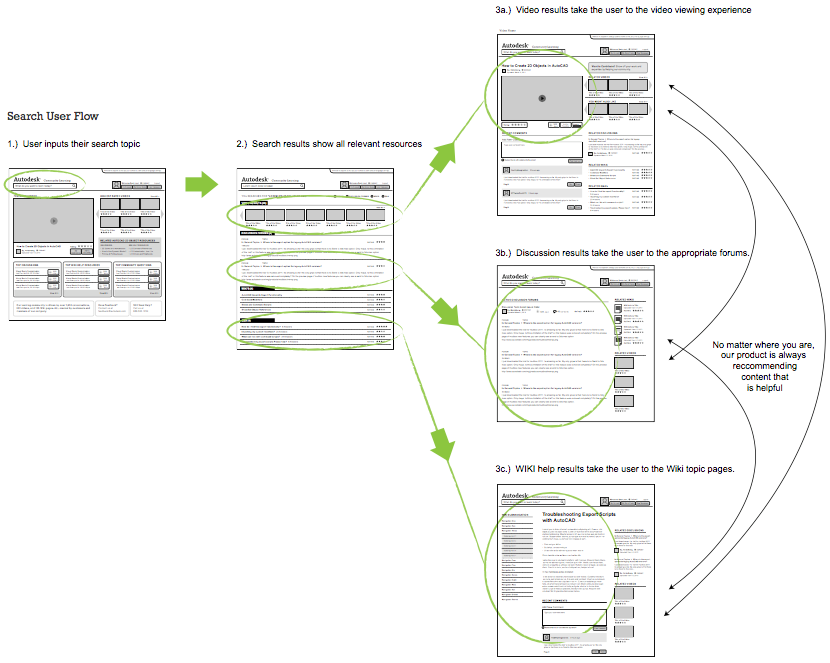Autodesk WikiHelp

Business Case
In 2009 the Autodesk Inventor team launched a prototype wiki help system. They noticed that expert users were posting instructions on how to perform specific tasks online (in blogs, articles, videos, etc.). Then other users were using Google & YouTube searches to find this information. While the Inventor team understood and documented in online help how features in the CAD product worked, users had the most knowledge of how to use the product on real world projects.

The idea was to look at how people learn and share knowledge, and rethink product help to be a community learning portal. The objective of a wiki help system was to allow users to rate, comment on, and contribute to the core help content of Inventor. By centralizing this information, and optimizing keyword search for CAD terms, both users and Autodesk would get more value than the distributed model, with information in many different locations.
Based on initial success of the prototype, in early 2010 Autodesk invested in improving it to become the primary help platform for its products. I was brought in as the UX design lead on that effort.
Vision & Tenets
The team tasked with creating a product from the prototype met for a week in Lake Oswego, OR - where the Inventor team is headquartered. The group of approximately 20 people came from Autodesk offices across the globe. The in-person kickoff allowed the team to all meet and build a rapport.
During that first week, we focused on crafting a clear vision, and set of tenets, or core principles that would guide the team. We came up with the following...
Vision: A bold, engaging, and collaborative environment that people will want to use as their tool of choice for learning and will recommend to others. We want people to say, "I don't know how I got by without it.”
Design Tenets (Core principles that guide design decisions)
- Community is KING!!! Building community comes first, all else follows.
- Open content is better than closed.
- Each learning experience is personal.
- Engaging learning - easy contribution.
- Learning is part of the products.
- Learning should be free.
Following those discussions, I drafted the Community Knowledge Base UX Overview. We used this to ground the team in a common understanding and communicate what we were doing to outside stakeholders.
We also spent time reviewing the current prototype to understand the technology (implemented with MindTouch), and user feedback on existing layout and interactions.
Live Prototyping & Distributed Team


In the first couple of weeks, we sketched and wireframed many page layout ideas, mapped the site's information architecture, and fine-tuned navigation flow. However, since we had a functioning prototype to start from, and it was implemented as a wiki, I was able to create design iterations in product early on. I modified pages in staging, reviewed them with team members, and tested with users, before pushing changes live. Simultaneously, developers on the team added functionality needed to support new features. Iterating and testing in a fully functional product, with real content allowed the team to work at a rapid pace.


Additionally, since the team was highly distributed (virtually no two members in the same office), having a central online environment to reference in daily meetings, and reviews was invaluable. It assured that no one was referencing an out of date version. Without this, the opportunities for miscommunication would have been far greater.
This also let teams that would be using WikiHelp as their new help delivery platform to begin trying it out. They could migrate content, author new pages, test search, comment, and other features - all while still in development. Feedback from these teams drove feature decisions as much as that from end users.
User Testing
We evaluated mockups, and product iterations every sprint (2-week cadence), to assure the product was usable, and delivering value.
Some interesting findings that came out of testing include:
- Style was more important than ratings. We planned to implement a rating feature that would allow users to score authors, as well as content. Something over and above a simple thumbs up or down on pages. At first, we also allowed users to highly customize the look and feel of content they created. But when we tested these ideas, we found most people ignored ratings, and judged the validity of content by its appearance. Users saw pages that didn't look like the others, and immediately distrusted the source. Based on these findings, we disabled most style editing, and stuck with simple thumbs up/down page rating mechanism.
- Focus on video! We saw a huge demand for video content - to find it, contribute it, see related clips... From the start, video was an integral component of the project, but it was clear from user feedback that it needed to be the focus.
- Make it personal. Users wanted the site to learn from their needs. Based on user profile, and past content viewed, recommendations would be tailored to each user.
Final Product
Autodesk WikiHelp was the company's primary online learning platform from 2012 to 2015, when it was replaced by the Autodesk Knowledge Network. This video gives a 2-minute overview of the product the team I worked with launched.